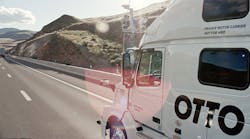This marked the world’s first commercial shipment by self-driving truck, according to the companies.
A professional truck driver was in the vehicle for the entire route, monitoring the delivery from the sleeper berth as the truck completed the route – exit-to-exit – entirely on its own without any driver intervention. The load originated at Anheuser-Busch’s facility in Loveland, Colorado and departed for its journey from the Fort Collins, Colorado weigh station.
“The incredible success of this pilot shipment is an example of what is possible when you deploy self-driving technology. It also showcases the importance of collaboration with forward-looking states like Colorado and innovative companies like Anheuser-Busch,” said Otto Co-Founder Lior Ron. “By embracing this technology, both organizations are actively contributing to the creation of a safer and more efficient transportation network. We are excited to have reached this milestone together, and look forward to further rolling out our technology on the nation’s highways.”
One major opportunity for Otto’s technology is that drivers will be able to rest during long stretches of highway, and perhaps even catch up on sleep. That begs the question of whether the driver is “on-duty” with respect to hours of service laws while they are resting. To ensure the safety of all road users, these laws limit the number of hours truck drivers can work each day. Naturally, this also limits how much money drivers can make. Otto’s self-driving technology has the potential to extend productive hours without forcing drivers to choose between safety and earnings.










